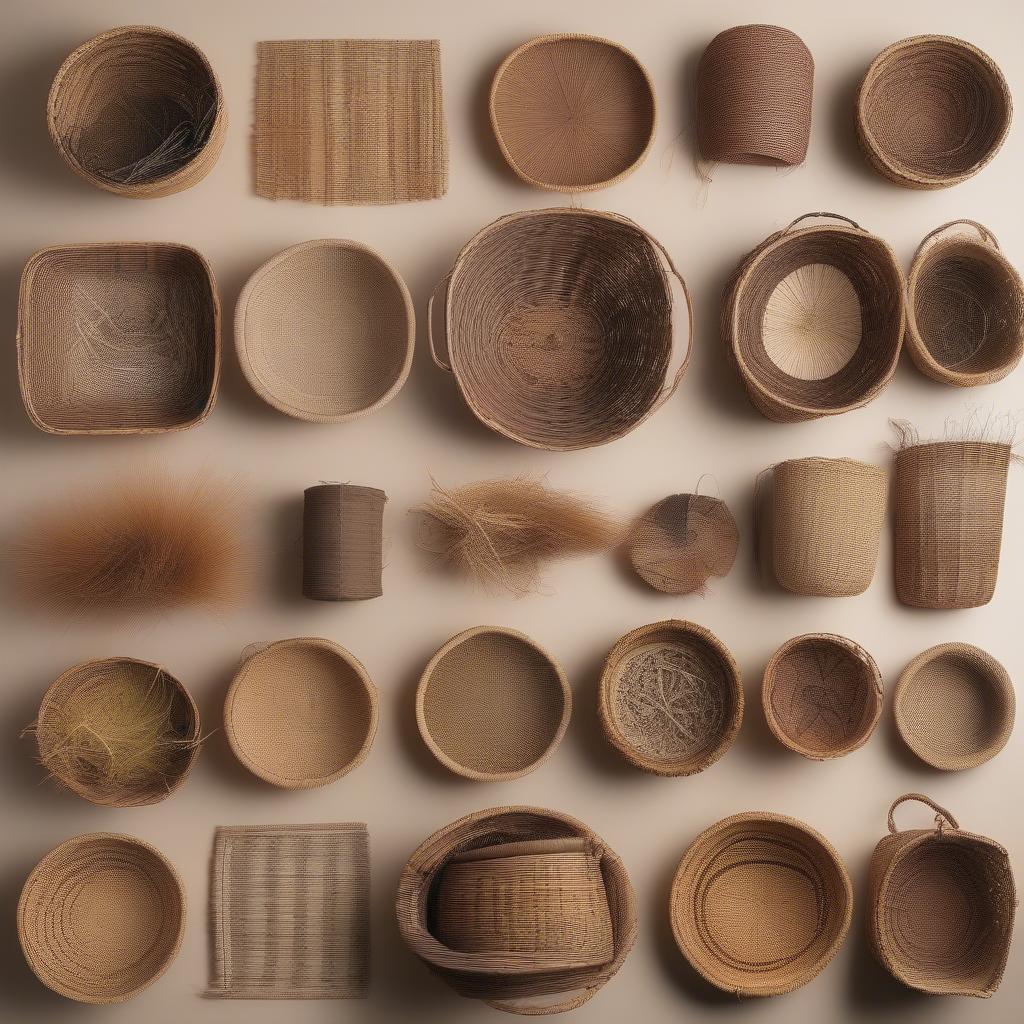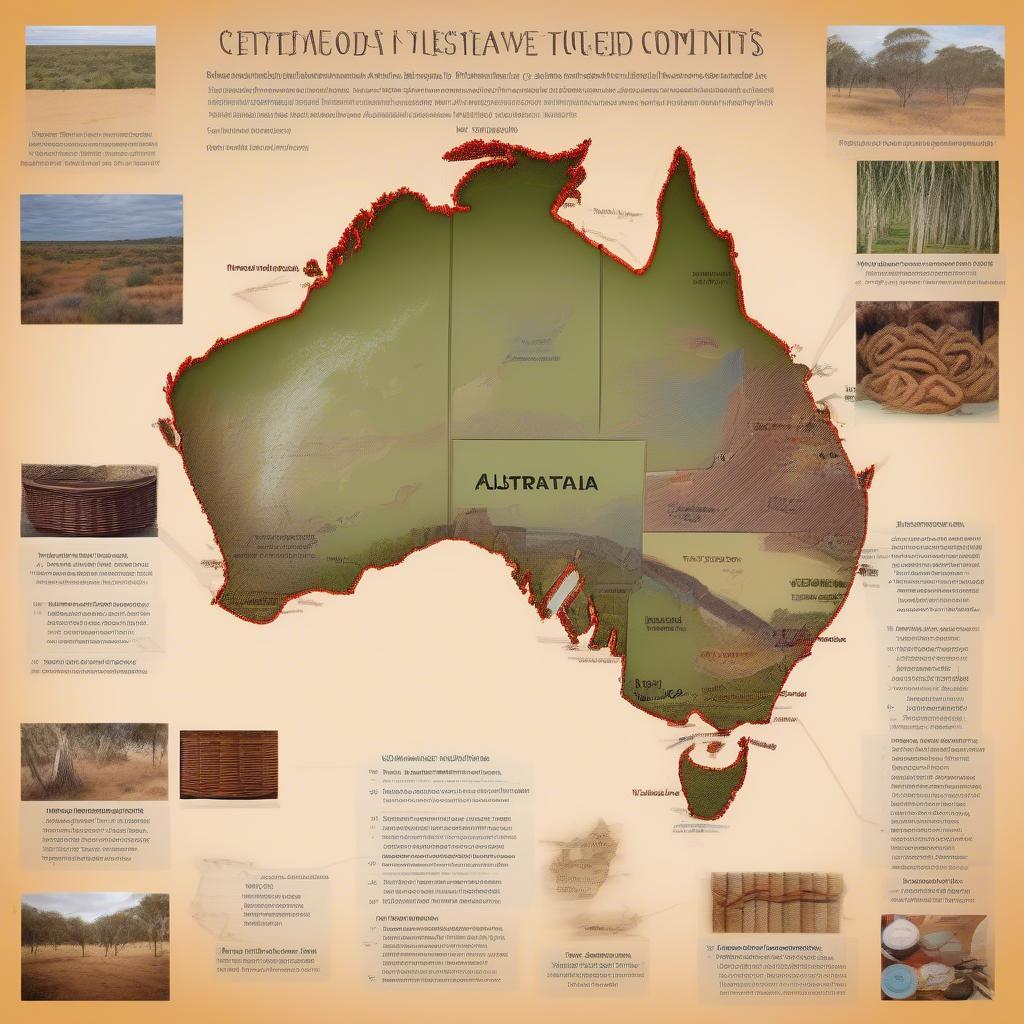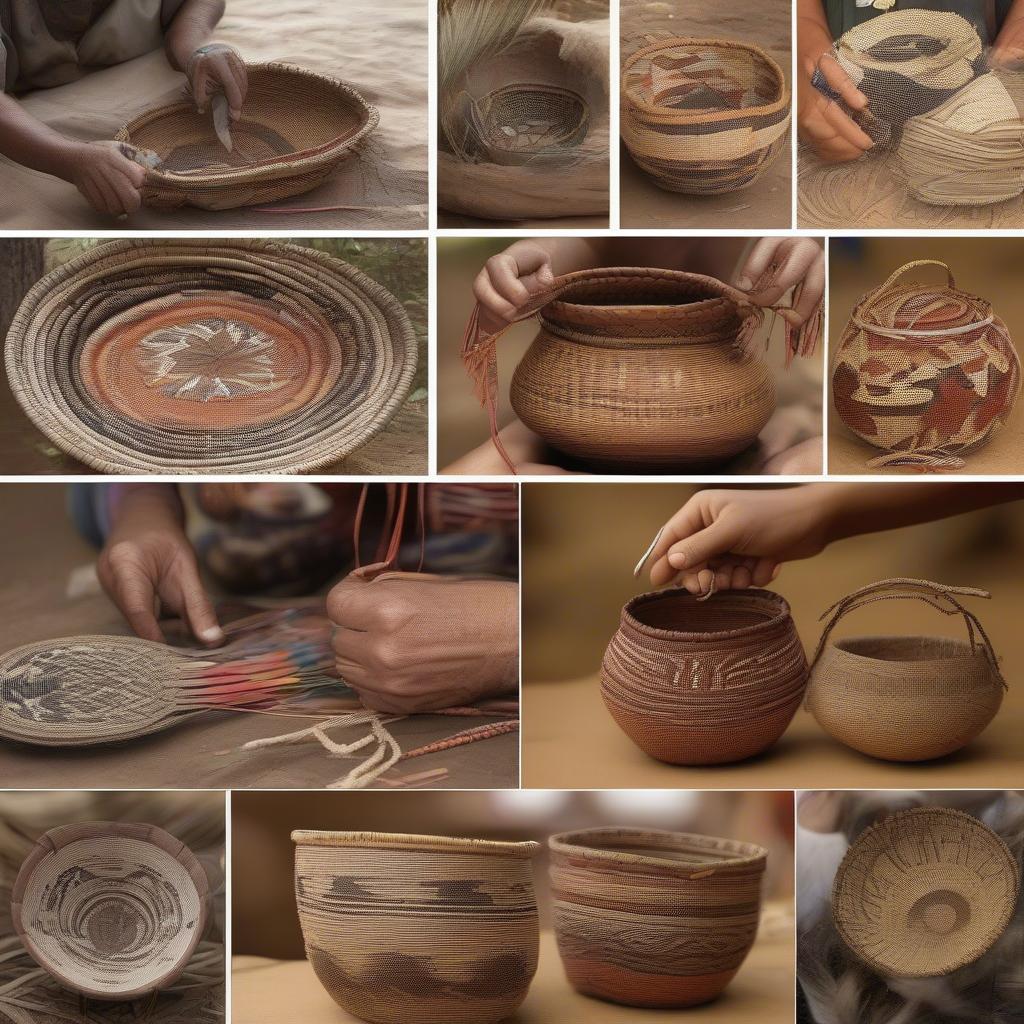Basket Weaving
Aboriginal Basket Weaving Materials: A Deep Dive into Indigenous Craftsmanship
Aboriginal Basket Weaving Materials are central to a rich cultural tradition that stretches back millennia. This article explores the diverse and fascinating world of these natural materials, their significance in Aboriginal cultures, and how they contribute to the creation of beautiful and functional baskets.  Variety of Aboriginal Basket Weaving Materials
Variety of Aboriginal Basket Weaving Materials
From the vast deserts of Central Australia to the lush rainforests of the north, Aboriginal communities have developed intricate basket weaving techniques using locally sourced materials. These materials aren’t just chosen for their practicality; they hold deep cultural and spiritual meaning, connecting weavers to their ancestral lands and stories. We’ll delve into the specific types of materials, their unique properties, and the traditional methods used to prepare them for weaving.
The Diversity of Aboriginal Basket Weaving Materials
The materials used in aboriginal basket weaving vary widely depending on the region and the specific cultural traditions of the weavers. [natural basket weaving materials](https://basketweavee.com/natural-basket weaving-materials/) commonly include grasses, barks, roots, vines, and even animal hair. Each material lends its own unique qualities to the finished basket, affecting its texture, strength, and overall aesthetic. Let’s explore some of the most common aboriginal basket weaving materials:
- Grass: Various types of grasses are used, including spinifex, kangaroo grass, and lomandra. These grasses are often dried and then soaked to make them pliable for weaving.
- Bark: Bark from trees like the paperbark and stringybark is stripped and processed into long, flexible strands ideal for creating sturdy baskets.
- Roots: Roots of certain plants are dug up, cleaned, and split to create strong and durable weaving materials.
- Vines: Vines are another popular choice, known for their flexibility and strength. They can be used whole or split into thinner strands.
Regional Variations in Material Use
Different regions across Australia offer unique ecosystems, and this is reflected in the basket weaving materials used by Aboriginal communities.  Regional variations of materials in Aboriginal Basket weaving In arid areas, spinifex grass is a staple material, while in coastal regions, vines and bark are more prevalent. Understanding these regional variations is crucial to appreciating the diversity and ingenuity of Aboriginal basket weaving traditions. basket weaving aboriginal highlights the rich tapestry of this ancient art form.
Regional variations of materials in Aboriginal Basket weaving In arid areas, spinifex grass is a staple material, while in coastal regions, vines and bark are more prevalent. Understanding these regional variations is crucial to appreciating the diversity and ingenuity of Aboriginal basket weaving traditions. basket weaving aboriginal highlights the rich tapestry of this ancient art form.
Preparing Aboriginal Basket Weaving Materials: Traditional Techniques
Preparing the materials for weaving is a crucial step in the process, often involving traditional techniques passed down through generations. These techniques ensure that the materials are strong, flexible, and ready to be transformed into beautiful baskets.
- Harvesting: The process begins with carefully harvesting the materials at the right time of year, respecting the natural cycles of the environment.
- Cleaning and Processing: The harvested materials are then cleaned and processed, often involving soaking, drying, and splitting to achieve the desired texture and pliability.
- Dyeing (Optional): Some communities also use natural dyes derived from plants, minerals, or even insects to add colour and decoration to their baskets.
The Significance of Traditional Knowledge
These traditional methods are more than just practical steps; they are deeply embedded in Aboriginal culture and spirituality. They represent a connection to the land and a respect for the natural world. aboriginal basket weaving instructions for kids can be a valuable resource for passing on these important traditions.
Aboriginal Basket Weaving: More Than Just a Craft
Aboriginal basket weaving is far more than just a craft; it’s an art form that embodies cultural identity, storytelling, and a deep connection to the land.  Cultural significance of Aboriginal basket weaving The intricate designs woven into the baskets often tell stories, represent ancestral spirits, or depict important aspects of the natural world. aboriginal basket weaving for sale offers a way to support these artisans and appreciate their unique creations.
Cultural significance of Aboriginal basket weaving The intricate designs woven into the baskets often tell stories, represent ancestral spirits, or depict important aspects of the natural world. aboriginal basket weaving for sale offers a way to support these artisans and appreciate their unique creations.
“Aboriginal basket weaving is a living tradition,” says Dr. Emily Carter, a leading anthropologist specializing in Indigenous Australian art. “It’s a powerful way for Aboriginal people to connect with their heritage and share their stories with the world.”
Conclusion: Preserving and Celebrating Aboriginal Basket Weaving
Aboriginal basket weaving materials are at the heart of a vibrant cultural tradition. By understanding the diverse materials used and the traditional techniques employed, we gain a deeper appreciation for the artistry and cultural significance of these beautiful and functional objects. koorie heritage trust basket weaving is an excellent resource for learning more about this important cultural heritage. Let’s continue to support Aboriginal artists and celebrate the rich legacy of aboriginal basket weaving.
When you need support, please contact our 24/7 customer service team at Hotline: +84 388 951 999, or visit us at our offices in Hanoi, Vietnam or Tech Avenue, Suite 12, San Francisco, CA 94105, USA.
